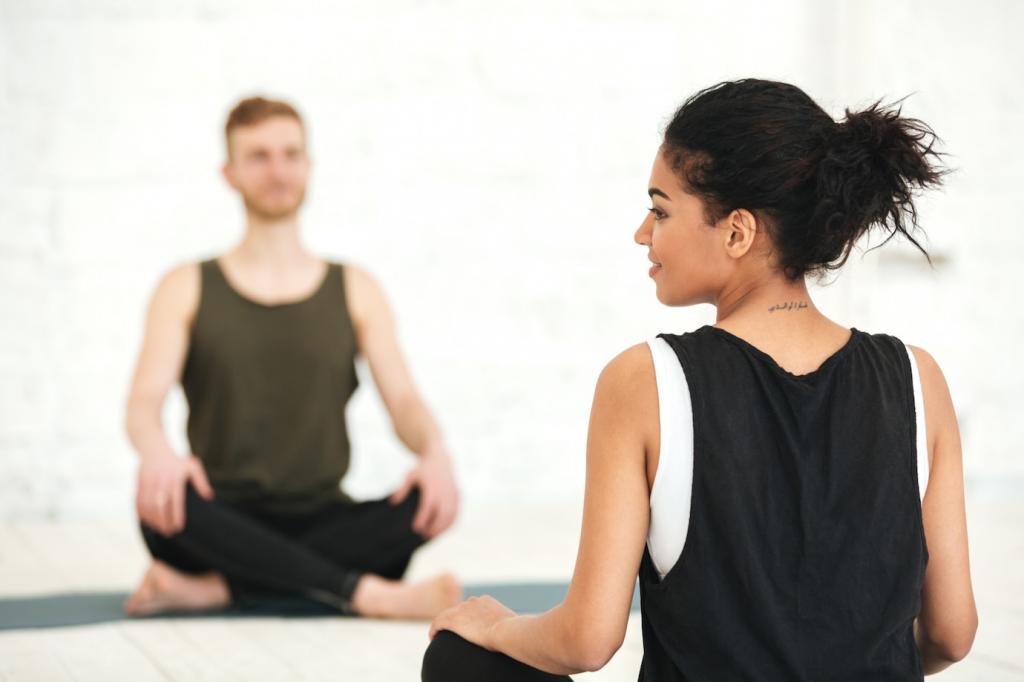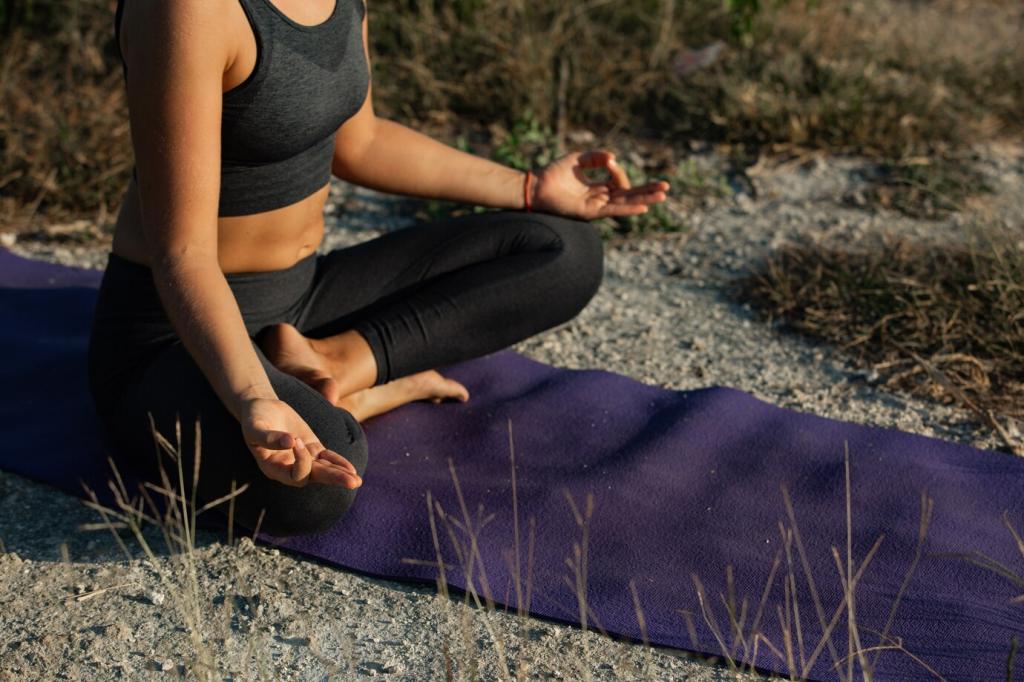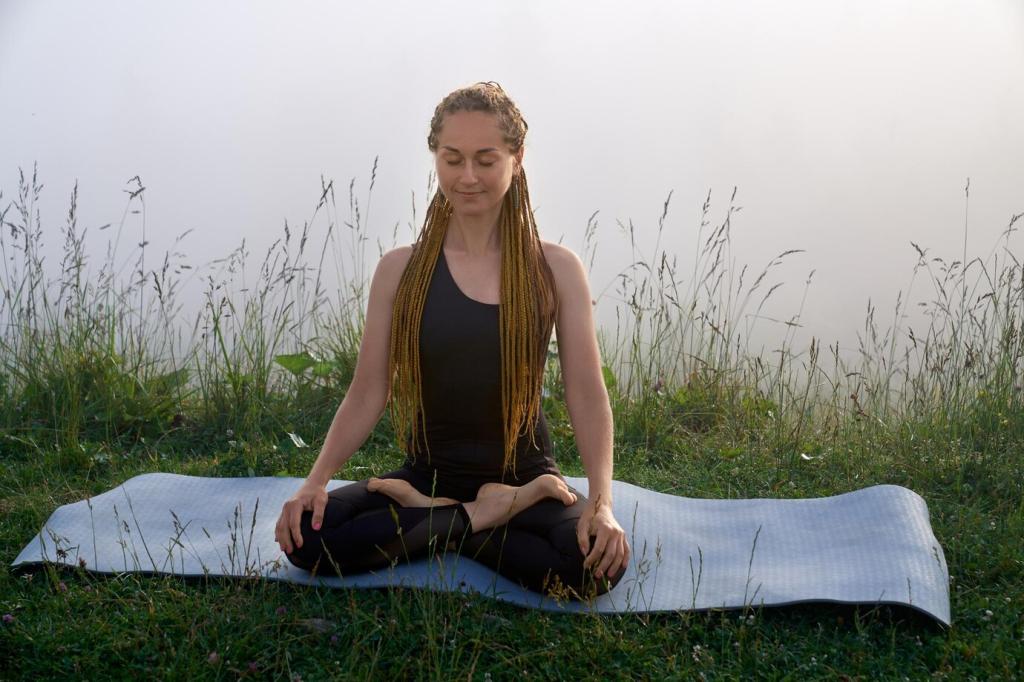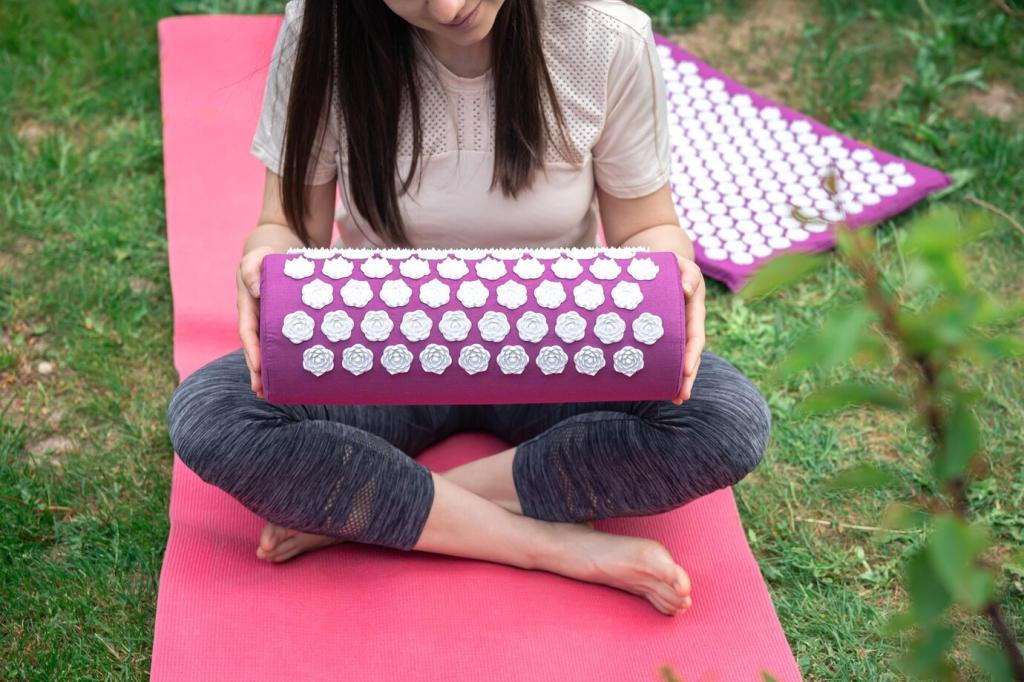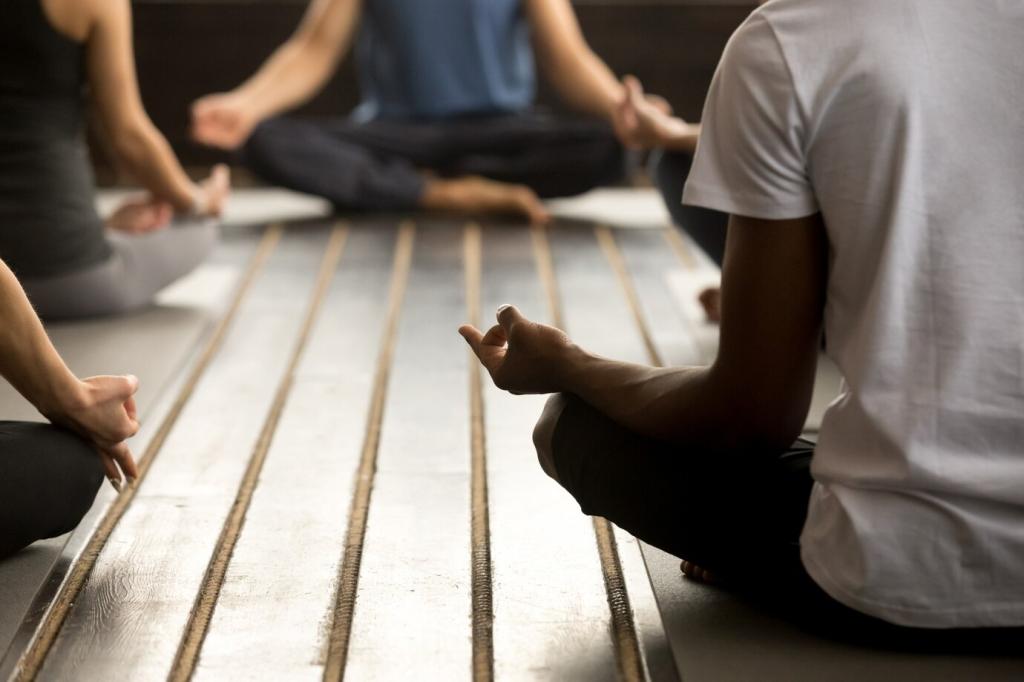Body Scan: Meeting Sensation with Kindness
Start at the toes and slowly move attention upward: feet, calves, knees, thighs, hips, belly, chest, hands, arms, neck, jaw, scalp. Label sensations—warmth, tingling, pressure, or neutrality—without fixing anything. The noticing is the practice, lovingly simple.
Body Scan: Meeting Sensation with Kindness
When discomfort arises, observe quality, intensity, and location. Can you stay curious for three breaths before adjusting? If you must move, do it deliberately. You are learning choice, not endurance. Share what sensations surprised you during practice.

